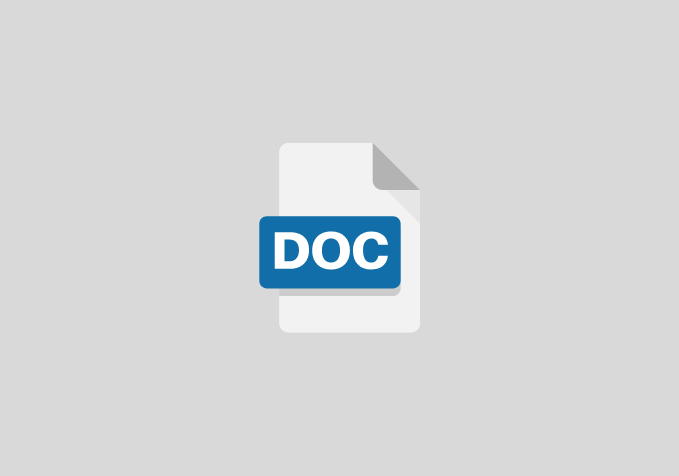The Impact of Oil Spillage on the Built Environment
CHAPTER ONE
Objectives of the study
- To determine if there is significant relationship between Oil spillage and built environmental.
- To ascertain the impact of Oil spillage on the Niger delta region of Nigeria.
CHAPTER TWO
LITERATURE REVIEW
Social and Environmental Impacts of E&P Activities in the Niger Delta Region
A lot of works, research, investigations have been conducted to ascertain the causes, effects, and solutions to the problems surrounding the production of oil and gas. Some studies are based on only the problems leading to environmental damage from oil and gas activities. Other works are based on the effect of oil and gas production on peculiar items. Nigeria is no exception of all the effects on the environment as a result of oil and gas E&P. Niger Delta which has been the main host region of oil and gas production in Nigeria may go with the irony of hydrocarbon production being a curse rather than a blessing which the entire country sees. Among all the nine states (Abia, Akwa, Ibom Bayelsa, Cross River, Delta, Edo, Imo, Ondo, and Rivers) in the Niger Delta, some communities are noted by their rich culture, others are noted for their occupation and others. Each oil company is located in one community or the other and even an entire state. Fifty-five percent of the 500 fields in the Niger Delta are onshore and the others are shallow water (napims.com,
2018), meaning, with the 193 oil fields currently operating, the majority are close to the land (communities). Due to this, significant communities are faced with peculiar environmental challenges even though other challenges run through all communities.
Oil Spillage and Land Resources Pollution
Niger Delta is known to be a major farming region in Nigeria, contributing remarkably in the agricultural sector of the country. It’s said to be the third producer of oil palm in the world after Indonesia (Kadafa, 2012a). Because of their rich vegetation, most of the indigenous people are engaged in farming as their means of livelihood. Some studies have been focused on how the various environmental challenges have affected the farming activities in the region (Niger Delta). That is. the productivity, fertility of the crops, access to farmlands for transportation of goods to their farms and to the market to sell their products; and others have also been focused on crop diseases.
Before the production of oil, the lands in Niger Delta were used for farming and other activities but the land is now shared with oil companies for crude exploitation. Activities of the oil companies are still affecting the remaining lands left for the people to use. Their farmlands for growing crops are being reduced every day because of oil spillage and other forms of pollution (Hubbert et al., 2014). Investigations on the various environmental problems associated with oil exploration and production in specifically the Niger Delta in Nigeria have revealed that oil spillages have caused immense damage to farmlands, sources of water, mangrove forest, fishing activities, and other marine resources.
CHAPTER THREE
MATERIALS AND METHODS
Materials
The study relied mainly on secondary data obtained from past and present studies, governmental and non-governmental institutions and existing literature. The data was obtained from World Bank Reports, United Nations Development Programme, United Nations Environmental Protection, Amnesty International, Nigerian National Petroleum
Corporation, Niger Delta Development Commission, Department of Petroleum Resources Nigeria, National Bureau of Statistics-Nigeria, published and unpublished materials, conference and seminar papers, journals, books and the internet.
Methods of Data Collection, Analyses, and Presentation
This research is based mainly on secondary data. The research also adopted comparative study method, descriptive and conceptual approach to analyze all the information generated from the various sources of data. The work is not focused on a peculiar sample size in one community because analyzing the socioeconomic implication of oil and gas on one community and generalizing it for the entire region will be more biased.
The statistical information used was extracted from:
Official statistics from Nigeria: this comprises of information obtained from government institutions, departments, bureaus and agencies in Nigeria. Such government institution consulted for data during this thesis were Nation Bureau of Statistics, Central Bank of Nigeria, Nigeria National Petroleum Corporation, Annual Statistical reports, Niger Delta Development Commission.
- Data from other Organization: World Bank Report, Amnesty International, UNEP
- Reports, UNDP Report, WHO, Friends of the Earth Nigeria.
- Other sources of information: Kadafa (2012), Ojimba (2011), Osuagwu & Olaifa
CHAPTER FOUR
ENVIRONMENTAL IMPACT OF OIL AND GAS EXPLORATION AND PRODUCTION AS A SOURCE OF SOCIO-ECONOMIC PROBLEMS IN THE NIGER DELTA
Introduction
The connection between environmental damage and oil and gas E&P activities in the Niger Delta has been established by many researchers and some have also been explained in the previous chapters. The life of the people living in the oil producing communities is affected by the impacts on the environment they live in. This section of the thesis seeks to evaluate how the environmental damages, that have impacted the oil producing communities, have affected their socioeconomic life over the past decades. Over the years, there have been a series of changes and adaptations that have been developed by the people in order to survive in their changing environment. Changes in socio-economic life can be related to all forms of environmental damage which were caused by either the oil companies or the indigenous people or both.
“Without appropriate environmental management initiatives, both the rural and urban poor suffer from the three key dimensions of human poverty-insufficient livelihoods, poor health and vulnerability” (UNDP, 2006).


